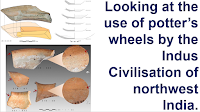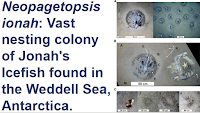The Neolithic culture of the Red River Delta has been studied since the 1960s, when a series of excavations at Tràng Kênh in n Haiphong Province on the northern edge of the delta uncovered a large amount of distinctive pottery, stone tools, and animal bones, as well as many nephrite body ornaments that include bangles with various cross-sections (including T-shaped sections), small rings, penannular earrings with four circumferential protuberances, and tubular beads, and evidence of the industry responsible for these items. The nephrite was apparently shaped, worked and polished using stone knives, stone drill points, grinders, and polishers, to form a range of jewellery which was traded from the Chinese border to central Vietnam.
In the 1970s a cluster of archaeological sites was discovered at Đầu Rằm on Tân Island in Quảng Ninh Province, about 16 km to the southeast of Tràng Kênh. Subsequent excavations at these sites revealed two periods of occupation, one by the Bronze Age Đông Sơn people, between about 300 BC and 100 AD, and one by a Neolithic community apparently from the same culture as that at Tràng Kênh, with similar production of nephrite jewellery.
In a paper published in the journal Archaeological Research in Asia on 16 November 2023, Isabella Shaw of the School of Archaeology and Anthropology at the Australian National University, Nguyễn Thị Thúy of the Vietnam Institute of Archaeology, Bùi Xuân Tùng of the Department of Archaeology at the VNU University of Social Sciences and Humanities, Elle Grono, also of the School of Archaeology and Anthropology at the Australian National University, Rachel Wood, again of the School of Archaeology and Anthropology, and of the Research School of Earth Sciences at the Australian National University, Cristina Castillo Cobo of the Institute of Archaeology at University College London, Peter Bellwood and Philip Piper, once again of the School of Archaeology and Anthropology at the Australian National University, and Lâm Thị Mỹ Dung, also of the Department of Archaeology at the VNU University of Social Sciences and Humanities, describe the results of a new series of excavations carried out at Đầu Rằm in 2018, and the conclusions drawn about the methods of the Neolithic nephrite jewellery-makers of the Red River Delta.
Đầu Rằm is located on the on the southwest side of Tân Island, at the western edge of Ha Long Bay. The island is cut off from the mainland by the Hàm Rồng and Giang rivers. The site comprises two outcrops of kart limestone, Núi Đầu Rằm Lớn to the southeast and Núi Đầu Rằm Nhỏ to the northwest, and an area of sand between the two. It is likely that significant archaeological material was lost from the area during quarrying, which removed most of the karst from both outcrops before the significance of the site was realised. Previous excavations of the site revealed an occupation by the Đông Sơn people, between about 300 BC and 100 AD, overlying an older, Neolithic occupation with evidence for the manufacturing of nephrite jewellery. Shaw et al. excavated two new trenches on the sandy area, one close to the southern face of the Núi Đầu Rằm Nhỏ karst outcrop, and the second on the eastern end of the previous excavations.
The excavations yielded only Neolithic material, with no sign of the Đông Sơn culture. The soil here was sandy, with a surface layer of dark brown through ash-grey loamy material. A high concentration of shells was found in the sediment, reaching about 1.5 m deep at the karst outcrop, and extending about 10 m southwards. No signs of post holes or pits were found, suggesting that no construction had occurred here, and the distribution of the shells suggests that they may have been discarded from the top of the limestone outcrop. Cultural items were found within this shelly layer, and had probably been discarded in the same way.
The discarded material includes a large number of shells, as well as Animal bones, charred Plant remains, fragments of pottery, stone implements and debitage (left over fragments) from the making of nephrite rings. Two types of pottery were found. The most common type, comprising 98.2% of the assemblage, or 20 152 individual pieces, has a crushed shell temper, and a rim type known as 'miệng mai' (meaning 'house roof') which is only known from the northern Red River Delta, having been found at Đầu Rằm, Tràng Kênh, and Bồ Chuyến, all of which suggests it was made locally. The second type of pottery is a finely manufactured, sand tempered ceramic, otherwise known from the Phùng Nguyên settlements of the upper Red River, in Vĩnh Phúc and Phú Thọ provinces. Twenty two carbon dates were obtained from material from the midden, which indicated that use of the site began between 1782 and 1645 BC, and ended between 1576 and 1441 BC, giving a period of use of between 94 and 293 years.
The most distinctive feature of the Đầu Rằm locality is, however, the nephrite jewellery which appears to have been manufactured there. The most common forms are rings and bangles, although some cylindrical beads have also been recovered from the site.
Based upon the debitage and tool fragments recovered from Đầu Rằm in 2018, Shaw et al. propose a chaîne opératoire (chain of operations) for the production of nephrite rings and bangles.
The material used in the manufacture is a s tremolitic nephrite, which is usually white or a pale orange colour, sometimes with grey mottling or veins. Where this nephrite came from is not precisely known, but nephrite pebbles can be collected from rivers and streams in Sơn La and Phú Thọ provinces, and nephrite inclusions are also known within the limestones of Thủy Nguyên, Hoành Bồ, and Đông Triều districts of Quảng Ninh province), and elsewhere in the mountains of northern Vietnam. The only evidence for the source material used at Đầu Rằm is a water-worn white nephrite cobble which shows signs of having been worked.
Once obtained the nephrite was cut into blanks (slices which could be further worked) using rasp-like saws made from sedimentary rock, which would have been drawn back and forth across the softer nephrite, probably with the addition of water and sand. These saws were small tools, designed to fit in the palm of the hand. Many had curved backs, which would have enabled them to be controlled by the index finger. Once the rock was cut into squared slices in this way it could then be ground to the desired thickness using a piece of rough sandstone. The corners of the squared slices could then be removed by sawing into the blanks from both sides, then snapping them off, to give a more rounded piece.
Once a near-round shape was achieved, the blank was further shaped by smoothing the edges with a piece of sandstone to achieve a circular disk. Examples of such disks have been found at Đầu Rằm with multiple grinding grooves, indicating that they were used to shape rings of different widths. This shaping of the outer surface of the ring was always completed before the inner core was drilled out, presumably because the rings were less delicate at this stage.
The inner part of the ring is theorised to have been drilled out by mounting the circular blank on a turntable which could be rotated with a wooden bow mechanism, then grinding the moving ring with a stone drill bit attached to a horizontal fixed arm. This would have enabled a circular grove to have been cut into the blank, with adjustment of the position of the fixed arm enabling different sized circles to be cut. The blank would have been worked by carving paired grooves on each side. A wooden bow drill has been found at the Dong Du site, and debitage indicating this modus operandi at Tràng Kênh, while a number of drill bits consistent with this method have been recovered at Đầu Rằm.
Finally, once the grooves on each side of the blank were deemed sufficiently deep, the core would have been removed by striking it with a hammerstone to form a ring. This last part of the operation appears to have been quite tricky, with a risk of breaking the thin ring in the process. At least one ring apparently broken at this stage has been found at Đầu Rằm, as well as ten hammerstones, with percussion marks on multiple facets, probably indicating they were used for a variety of tasks; one of these was notably small, and could have been easily held in one hand for precision tasks such as striking out the core of a ring.
This process would have left a sharp, uneven, flange around the inside of the ring, so the next task would have been to remove this by inserting a cylindrical grinder which could be used to smooth this inner surface by manual rotation. Four such cylindrical grinders have been found at Đầu Rằm, three of which appear to have been used at both ends.
Finally, the ring would have been polished to a smooth surface using a dense, fine-grained stone polisher (one example of which has been found at Đầu Rằm), and then probably a piece organic material such as Bamboo, wood, or leather.
Previous excavations at Đầu Rằm produced material from two phases of occupation, with the majority of the material coming from the younger Bronze Age Đông Sơn culture. However, Shaw et al.;s 2018 excavations found no trace of this younger material. Both dating evidence and the material recovered suggest that the earlier phase of occupation at Đầu Rằm was Neolithic, and the common style of pottery and nephrite working strongly indicates that the culture here was the same as the one at the nearby Đầu Rằm, Tràng Kênh, and Bồ Chuyến sites, with archaeologists referring to this common culture as the Tràng Kênh culture, as this site was discovered first.
Radiometric dates obtained from both Tràng Kênh and Đầu Rằm suggest that this culture was active during the early-to-middle second millennium BC, although the results were not considered accurate enough for a more detailed chronology. Occupation at the Tràng Kênh site continued into the Bronze Age, which has been dated here to the end of the second millennium BC.
The artisans at Đầu Rằm used a standardised tool kit and methodology to manufacture rings, which would have required both a high degree of skill and a level of technical understanding which enabled the manufacturing and maintenance of the equipment needed for this process. This process also appears to have been used at Tràng Kênh, where evidence for a range of other manufacturing processes, not seem at Đầu Rằm has also been discovered. Items seen at Tràng Kênh but not Đầu Rằm include earrings with four protuberances, penannular earrings and T-sectioned bangles. T-sectioned bangles have also been found at sites in the upper Red River Valley associated with the Phùng Nguyên Neolithic culture, and at Mán Bạc in Ninh Bình Province, a site confidently dated to between 2000 and 1300 BC, indicating manufacture clearly pre-dating the onset of the local Bronze Age.
The difference between the wider range of manufactured items found at Tràng Kênh than Đầu Rằm poses questions about the nature of the two sites. It is possible that Tràng Kênh was simply larger than Đầu Rằm, and could therefore support a greater range of craftsmen, but it is also possible that some of the skills used at Tràng Kênh were effectively trade secrets which the people of Đầu Rằm did not possess.
The wide area over which jewellery apparently manufactured at Tràng Kênh and Đầu Rằm have been found implies that these settlements were embedded in an extensive trade network. It has been suggested that the raw materials from which this jewellery was made was itself imported, which if true, would suggest that the location of the settlements was chosen for access to waterways, and therefore trade networks.
Items made from nephrite have been found at more than 70 Neolithic Phùng Nguyên culture sites on the plains around the lower Red River. Some of these sites, such as Hồng Đa, show evidence of local manufacture of this jewellery, presumably from imported materials, but it is quite likely that many were importing finished jewellery from Tràng Kênh and Đầu Rằm. Pottery thought to have been manufactured in the lower Red River Valley has been found at both Tràng Kênh and Đầu Rằm, implying that this was another item traded between communities.
The Neolithic trade networks in nephrite jewellery and other goods were, nevertheless, quite restricted compared to the Iron Age trade networks which emerged in the region with goods being traded from Thailand and Cambodia to Taiwan and the Philippines. The Neolithic trade network appears to have extended at least as far south as Cồn Nền, a Bàu Tró culture site on the coast of Quảng Bình Province. This is consistent with other evidence, which suggests that by about 4000 years ago, two distinct and separate trade networks had emerged in northern and southern Vietnam.
Elsewhere, there appears to have been trade between Taiwan and southeast China during the Neolithic, where workshops appear to have made similar cylindrical beads, rings and penannular earrings at Fengtian in eastern Taiwan, around the Zhujiang Delta, and at Yunglong in Hong Kong. Some of the techniques used at these Chinese workshops resemble those used at Tràng Kênh and Đầu Rằm, possibly implying a both groups shared a common ancestry, possibly from the lower Yangtze region of central China, where Neolithic workshops are known from around 4000 BC onwards.
See also...
Follow Sciency Thoughts on Facebook.
Follow Sciency Thoughts on Twitter.




























































